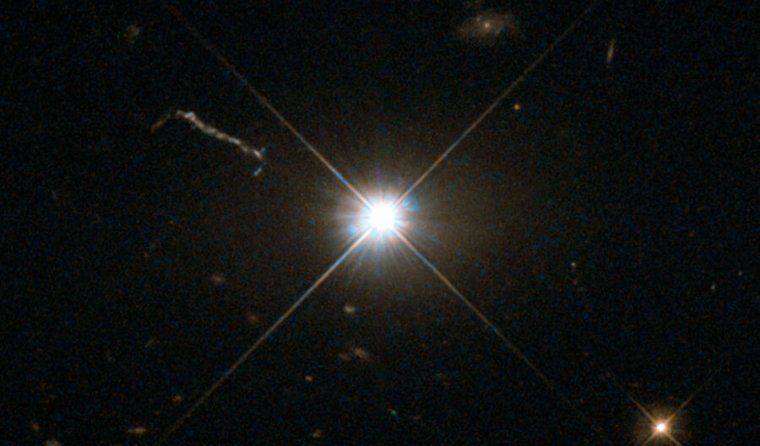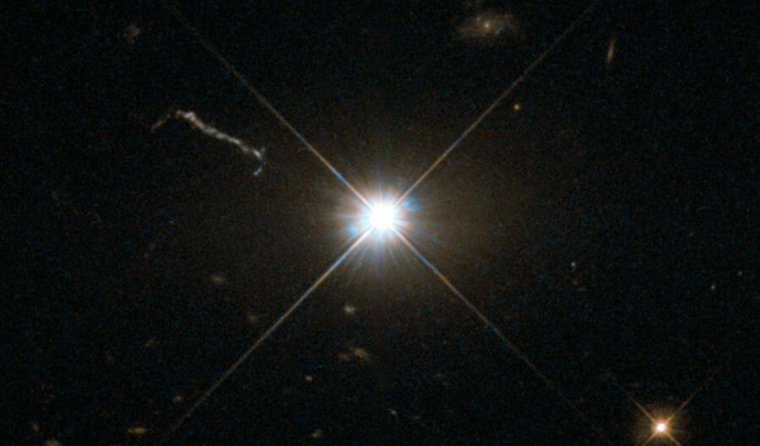
Enlarge / This quasar is over two billion light years away, yet is bright enough to outshine far closer galaxies. (credit: NASA/ESA)
Active galaxies are some of the brightest objects in the Universe. These galaxies send out enormous jets of matter at near light speed, all powered by matter falling into the supermassive black hole at the center. While all galaxies seem to have supermassive black holes, not all of them are active—our own galaxy, the Milky Way, has a quiet black hole at its core. So what makes the difference? Why are some galaxies and their black holes active, while others sit quietly?
Obviously, taking a regular galaxy and turning it into an active one isn’t as simple as flicking a light switch. Modeling has suggested that activating a galaxy’s central black hole (and thus the galaxy as a whole) can be part of the galaxy-building process, which takes place through the merger of smaller galaxies through collisions. These collisions can send gas sloshing around inside the galaxy, creating high enough densities at the core to activate the black hole. Now, another study is suggesting that these collisions can shut the black hole down again as well—it all depends on the details of the geometry.
A donut near the hole
To understand how this works, you have to understand the environment near a black hole. While a great deal of attention is paid to the reality-bending gravity at the black hole’s event horizon, everything that actually affects the surrounding Universe takes place a bit of a distance from that location. There, the black hole’s gravity organizes any infalling matter into a flattened disk that feed matter into the black hole called an accretion disk, with the black hole at its center. Beyond that, a more diffuse, donut-shaped cloud of gas feeds into this disk.





